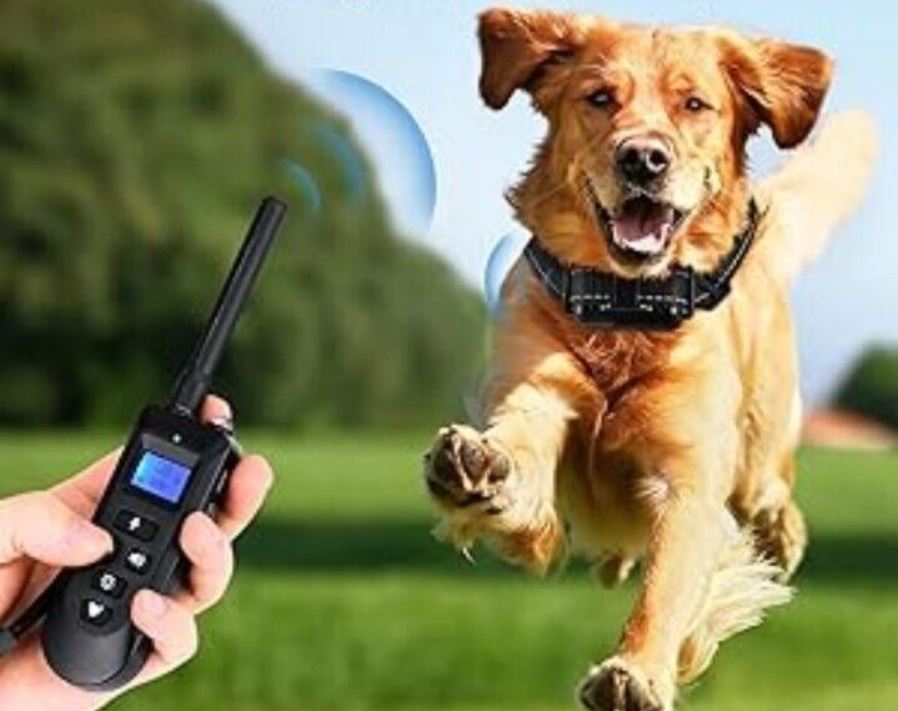Dog training collar with remote vs without remote

If you’re here, you’re probably trying to figure out the difference between dog training collars with remotes and those without. Maybe you’re curious about how they compare, or perhaps you’re trying to decide which option would work best for your training needs.
I remember when I first started using dog training collars. At one point, I thought a collar with a remote would be a game-changer, and it was! The ability to control settings from a distance added a whole new level of flexibility. But there are times when simplicity is key. I’ve also used collars without remotes, which were straightforward and effective, especially for simpler training routines.
So, what’s the real difference? Is the remote really worth the extra investment?
We’ll consider the ins and outs of both types and can help break down what each one brings to the table. By the end, you’ll have a clearer idea of which type might be best suited to your training needs and your dog’s behavior.
Read Also: How do dog bark collars work?
What’s the Difference Anyway?
Alright, let’s break it down without getting too technical. A dog training collar is basically a tool that helps you communicate with your dog – usually through a little vibration, a beep, or, in some cases, a mild static zap. The idea is to use these signals to guide your dog’s behavior, whether it’s teaching them to stop barking at the mailman or to come back when you call them at the park.
Now, here’s where it gets interesting: Some collars come with a remote, and others don’t. The ones with a remote let you control when the collar does its thing. The ones without a remote usually work automatically based on what your dog’s doing – like a bark collar that zaps (gently!) when they start barking up a storm.
In England, approximately 3.3% of dog owners reported using remote-activated e-collars for training their dogs. These collars allow owners to control the stimulation level and timing, providing a customizable training experience.
So, let’s chat about the pros and cons of each.
Dog Training Collar with Remote

Pros:
With a remote collar, you’re the boss. You get to decide exactly when to give your dog a signal, which can be super helpful when you’re trying to train specific behaviors. Imagine you’re out for a walk, and your dog starts lunging at a squirrel (classic). You can quickly press a button to give them a little reminder to stay cool.
- Customize It: Many remote collars let you adjust how strong the signal is, whether it’s a vibration, beep, or zap. That way, you can find what works best for your dog without overdoing it.
- Versatility Galore: These collars aren’t just one-trick ponies. You can use them for all sorts of training – from teaching your dog to stop barking to getting them to sit and stay when you’re about to cross the street.
Cons:
But hey, with great power comes… well, you know the rest. Here’s what you might want to think about before going all in on a remote collar.
- Timing Is Everything: Because you’re the one in control, you’ve got to get your timing just right. If you’re a little late with the signal, your dog might not understand what you’re trying to tell them. Trust me, I’ve had moments where I’ve hit the button and Rex (my dog) just looked at me like, “What was that for?”
- Not Cheap: Remote collars tend to cost more than the ones without remotes. So, if you’re on a budget, this is something to keep in mind.
Dog Training Collar Without Remote

Pros:
If you’re not super into the idea of constantly managing a remote, then a collar without one might be more your style. These collars do their thing automatically, so you don’t have to worry about timing or pressing buttons.
- Super Easy: This is the kind of collar you just put on your dog, and it does the work for you. No remote to mess with, no settings to adjust – just simple, straightforward training.
- Budget-Friendly: Generally speaking, these collars are easier on the wallet. So, if you’re looking to save a few bucks, this might be the way to go.
Cons:
Of course, less control means you’re trusting the collar to know what’s best – and sometimes, that doesn’t work out perfectly.
- Can’t Customize Everything: Since the collar is automatic, you don’t have as much say in how and when your dog gets a signal. This might be fine for some things, but if you’re trying to fine-tune behavior, it can be a bit limiting.
- Overcorrection Woes: There’s a chance the collar might correct your dog when it’s not really necessary. Like, if your dog barks because they’re excited to see you (how sweet!) and the collar gives them a zap, that’s kind of a bummer, right?
So, Which Collar Is Right for You?

Okay, so now that we’ve gone through the basics, you’re probably still wondering which one’s right for you and your dog. Here’s my two cents:
- If you like being in control and want to tailor your dog’s training, go for a remote collar. You get to decide exactly when to correct or reward your dog, which is awesome for more precise training. It’s perfect for dogs that need a little extra guidance.
- If you’re looking for something simple and straightforward, and you don’t want to mess around with a remote, then a non-remote collar could be just what you need. It’s easy to use, usually cheaper, and ideal for basic training needs like curbing excessive barking.
My Experience
Let me tell you a little story. When I first got Rex, I was all about getting him trained up fast. I started with a non-remote collar, thinking it would be the easiest option. It was okay, but I quickly realized that I wanted more control, especially when we were out and about. So, I switched to a remote collar, and it was a game-changer. Suddenly, I could correct Rex in real-time, and it made a huge difference in his behavior. But, I’ll admit – there were a few times I accidentally hit the button when I didn’t mean to, and poor Rex gave me the side-eye for the rest of the day. Live and learn, right?
The Bottom Line
Whether you go with a dog training collar with a remote or one without, the key is to use it thoughtfully and with your dog’s best interest in mind. Both types of collars can be super helpful, depending on what you’re trying to accomplish. Just remember, training takes time, patience, and a whole lot of love. Whatever collar you choose, make sure it’s helping you and your dog build a stronger, happier bond.
Read related posts about





